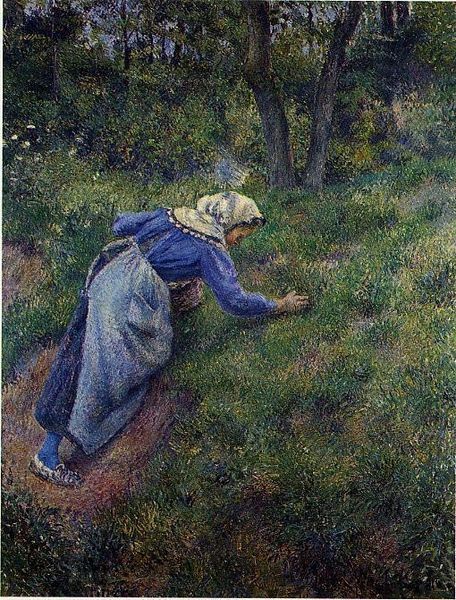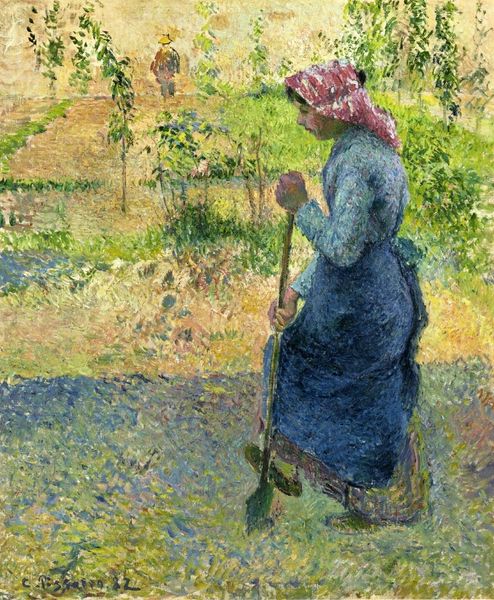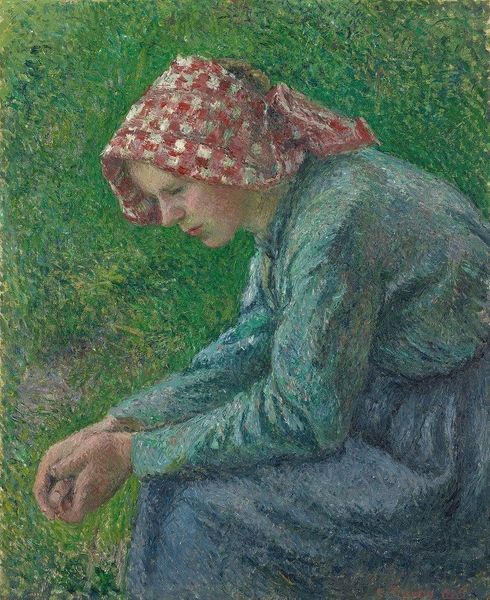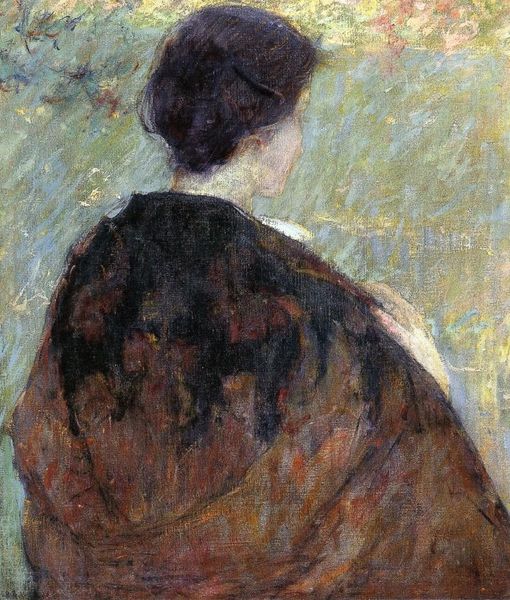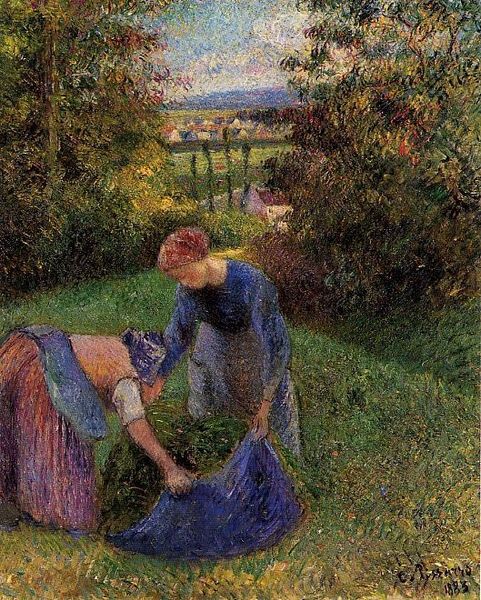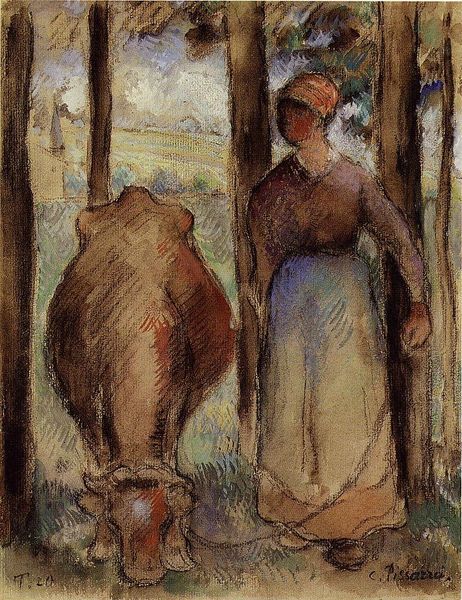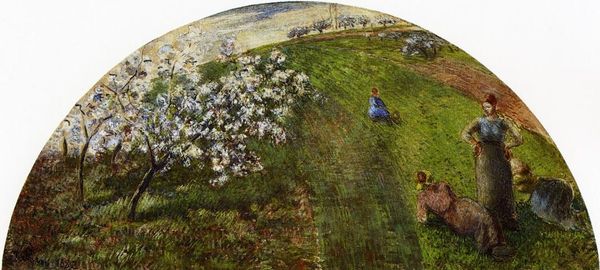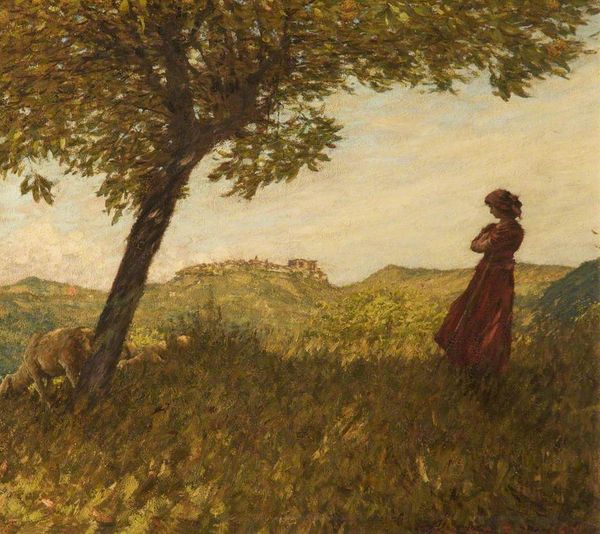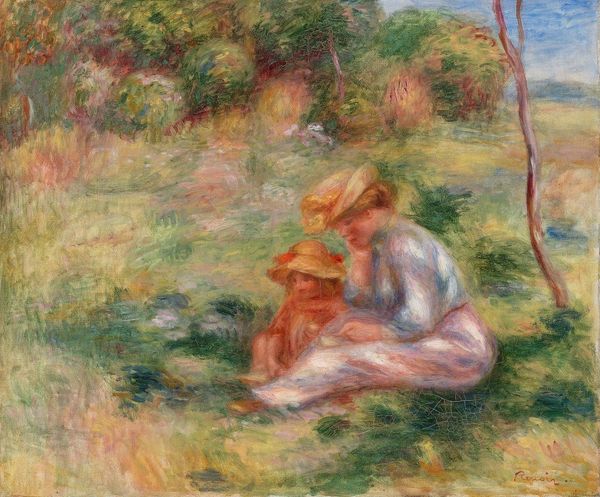
painting, plein-air, oil-paint, impasto
#
painting
#
impressionism
#
plein-air
#
oil-paint
#
landscape
#
impressionist landscape
#
figuration
#
oil painting
#
impasto
#
france
#
painterly
#
genre-painting
#
realism
Copyright: Public domain
Curator: Camille Pissarro’s oil painting, "Peasant Sitting with Infant", from 1881, offers a glimpse into rural life during the Impressionist period. Editor: It's quite intimate, isn't it? The heavy impasto creates a palpable sense of texture; you can almost feel the weight of the woman on the grass, the heaviness in her limbs. Curator: Pissarro, deeply interested in social justice, consistently painted rural subjects as a way to depict the laboring class with dignity and respect. It counters the prevailing academic portrayals, offering an alternative view on whose lives mattered. Editor: Look at how he’s situated the figure within the field, embedding her in nature’s cycles, and evoking images of earlier mother-earth goddesses, reflecting a very specific role for the woman. The arrangement itself acts as a symbol. Curator: I agree, but the symbols get quite murky, doesn't it? Especially within Impressionism, whose tenets revolved around immediacy and the momentary, not necessarily timeless iconography. His paintings resist easy classification; we should acknowledge his complex engagement with representing rural labor at a time of immense socio-economic change. There are also a lot of gender dynamics at play. Editor: Perhaps so, and yet, the palette is so grounding, relying on earthy greens, browns, and creams. The work presents itself as a return to a simpler time; it speaks to enduring archetypes like nurturing and mothering, themes central to a pre-industrial past that continued to shape notions of female identity. Curator: Perhaps Pissarro tapped into some of these symbols consciously or unconsciously—but even his intentions do not excuse how idyllic and non-confrontational this piece is as far as class-based exploitation is concerned. Editor: Perhaps. Yet, whatever critical distance one applies, the painting draws the viewer into a tender observation of mother and child; there is beauty within it regardless. Curator: Seeing Pissarro's piece through the lens of labor and historical change really allows me to reassess my initial reading, focusing on beauty rather than the conditions that made that beauty possible. Editor: And for me, delving into social context and period analysis can inform but not eclipse how enduring images trigger deeper, even innate recognition in us. Thank you for your thoughtful approach.
Comments
No comments
Be the first to comment and join the conversation on the ultimate creative platform.


